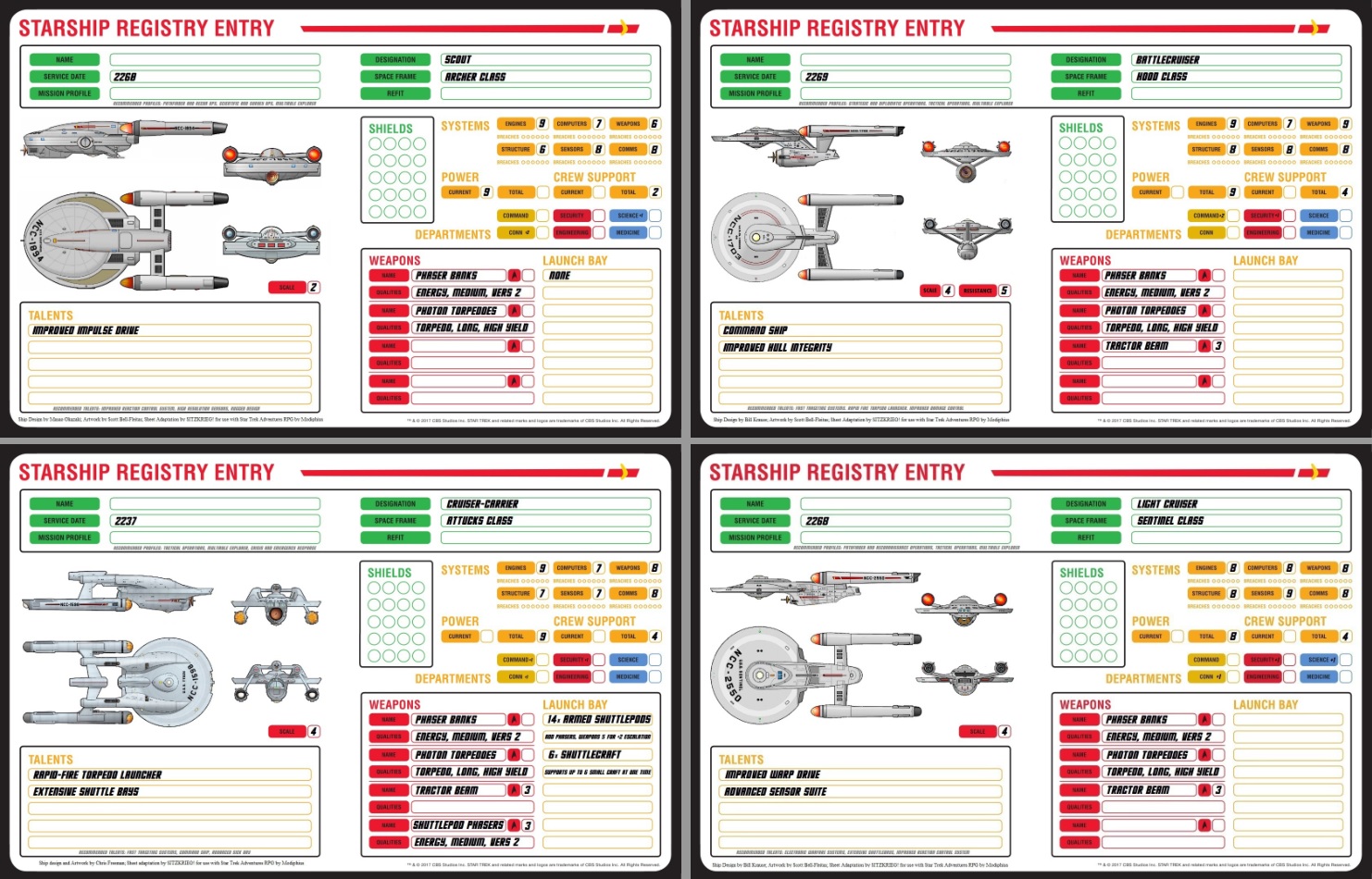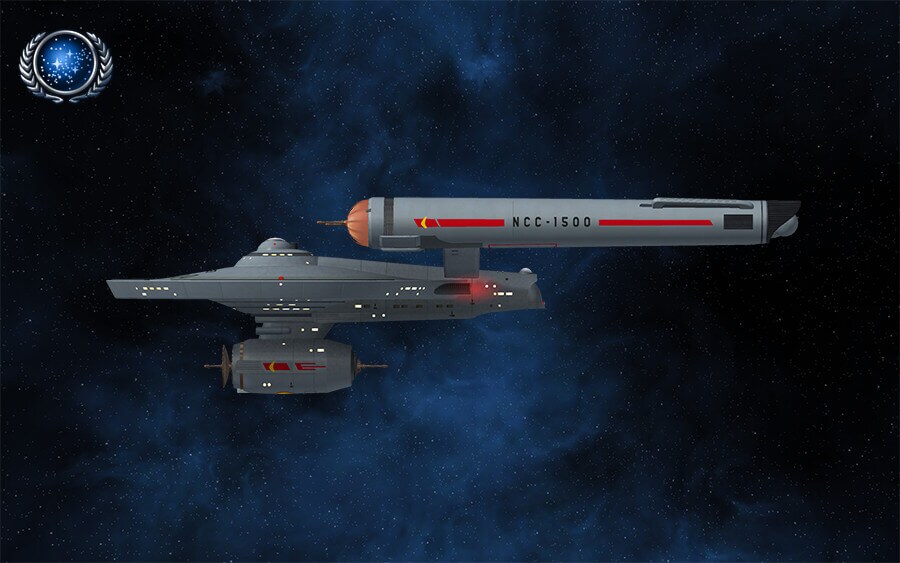Star Trek Ranger Class Scout

Starfleet Marine CorpsFounded:Government:Military:Commanding Officers:(Founder)The Starfleet Marine Corps (abbreviated SFMC) was a descendant of naval infantry, based upon marines and army infantry of many member planets.As with the and, the SFMC was an autonomous branch of the, falling under the jurisdiction of the, but not under the auspices of itself. The Commanding officer of the SFMC held the rank of, which was equivalent to.The primary role of the Marines within the fleet was to maintain a well armed offensive and defensive force for rapid deployment anywhere within Federation and outlying space. Marine detachments were stationed aboard and bases where they assisted the crew in battles, in boarding enemy ships, and conducting planetary actions, as well as assisting in the defense of Federation installations. They also served as a landing force; securing an area for transporter or shuttle landing. Unlike, Marines do not walk a patrol, investigate crime or administer the brig and unlike, Marines did not operate the ship's weaponry. As a result of their mixed land and space role, Marine forces were mainly specialized in amphibious (figuratively 'of two worlds') assaults using infantry, armour, artillery, air/spacecraft, and watercraft. They train for many combat scenarios including hostage recovery, rescue of citizens caught in the midst of civil war, as well as full ground based combat.
Federation U.S.S. Ranger class Light Cruiser (Star Trek): From. It is expected to do act a long range scout for a battle group like a destroyer but is expected to also carry more firepower and shields. This is so the Light Cruiser is able to operate more independently than Destroyers. The Ranger class is the Federation's more successful.
Contents OrganizationThe SFMC was split into ten numbered Expeditionary Forces. Within each expeditionary force were five Corps, plus a Brigade each of. Every corps had three Divisions, each made up of three Brigades and an. A brigade had five Regiments and a Battalion of. A Regiment was two Battalions of five Companies each, plus an extra Platoon of scouts.
Contents.History of sought out one of the biggest licenses in the space adventure genre -and received it in 1982.: 120 Weisman and looked out-of-house for a Star Trek design team. See also:The game's depiction of the, the result of work by science fiction author, differs greatly from later canon. Ford's Klingons not only appear in the supplement for the game, but also in his Star Trek novel, whose story is told almost entirely from a Klingon perspective. Ford designed his Klingon society to provide a logical basis for the actions and statements of onscreen Klingons in the original TV series, as well as the differing appearance of the Klingons in the original series and those in (the only movie featuring Klingons to have been released when the novel and game supplement were first published). They are guided by a philosophy expressed in their klingonaase language as komerex tel khesterex, roughly translated as 'that which is not growing is dying'; komerex, referring to any structure growing and expanding its control over its surroundings, is also their word for their empire (komerex Klingon). This leads to a belief that the proper role of species not part of a komerex is to serve those that are, and the Klingons have subjugated many of these servitor species (kuve) in their conquests. The philosophy also motivates their actions on a personal scale, with individuals engaging in schemes and intrigues to enhance their personal power and that of their extended family, and generates traditions like starship officers being promoted as a result of assassinating their superiors.The Klingons seen in Star Trek: The Motion Picture, or 'Imperial Klingons', are the original natives of the Klingon homeworld Klinzhai.
The ones seen in the TV series are 'human-fusion' Klingons, a result of genetic engineering combining the DNA of humans and Imperial Klingons into a hybrid better able to work in environments occupied by humans and thought to better understand them (for purposes of fighting them). Romulan-fusion Klingons also exist (Ford's Klingons contacted the Romulans before humans) and possibly other hybrids (such as with the Orions, whose space abuts both the Empire and the Federation).Ford's Klingons (at least those serving in their space fleet) believe that when they die they will serve in a 'Black Fleet' in the afterlife. Given the fact that few stars are visible at night on most of Klinzhai due to cloud cover, they have a mystical reverence for 'the naked stars' and believe they remember acts of courage performed under them.In contrast, the Klingons in and subsequent TV series, as well as the later movies, have a culture and traditions based more on a cross between the and (or, rather, Western imaginations of them), focused on personal and familial honor and placing value on sacrificing their lives for the causes they serve. The canonical Klingon Empire is governed by the High Council, led by a Chancellor, instead of an Emperor. Their language, is very different from Ford's klingonaase, and their homeworld is Kronos ( in Klingon). The canonical explanation of the differing appearance of Klingons in the original TV series was first joked about (but left unexplained) in the episode 'Trials and Tribble-ations', then fully explained in as being due to a viral infection caused by an attempt to infuse Klingons with the superhuman DNA of and his followers (a variation of the human-fusion idea).Romulans When the game was published the only filmed material featuring the were the two original series episodes 'Balance of Terror' and 'The Enterprise Incident'.
FASA's Romulans are the descendants of prehistoric Vulcans transplanted to the planet Romulus by the species known as the Preservers (mentioned in the TOS episode 'The Paradise Syndrome'). Before developing interstellar travel, Romulan science concluded they were not native to their planet, leading to a social and religious goal of building a 'Road to the Stars' to find the 'gods' that placed them there, leading to the establishment of the Romulan Star Empire.The Romulans were one of the Federation's chief antagonists in Star Trek: The Next Generation, featured in many episodes, and a canon explanation of their origin was given in that series. They are the descendants of Vulcans who did not agree with 's doctrines of logic and emotional suppression, instead choosing to leave Vulcan and travel through vast distances of space to their new home on Romulus. (A similar concept was used by in and the series of novels.)The Triangle The game supplement, first published in 1983, introduced 'the Triangle', a lawless area wedged between the space occupied by the, the and the.The Triangle supplement later introduced a set of color maps, allowing players to know exactly how long it would take them (in game time) to travel between star systems.This lawless area was popular with players as it allowed them to escape the strict parameters of a military campaign. This section does not any.
Unsourced material may be challenged. ( December 2018) FASA developed its game in the mid-1980s, when the only new on-screen Star Trek material was the second through fourth movies, and fans received new material in other forms eagerly., the company with the right to grant licenses to produce Star Trek-related materials to other companies, gave its stamp of approval to many printed works, and there were no claims that these materials were or were not canon. They borrowed freely from each other - the game includes background from the 1980 book, while the 1987 book includes elements from the FASA background - and fans believed that if Paramount's name was on something, it must be valid Star Trek. Many players therefore were dismayed when Star Trek: The Next Generation began to air in 1987 with what they saw as 'changes' to a pre-established universe.Paramount revoked FASA's license to publish the official role-playing game in 1989. The decision was sudden, and according to FASA staff, motivated by two factors.First, Star Trek: The Next Generation was growing increasingly popular and Paramount wished to exert greater control over its property and derivative works. FASA had, by 1989, published two works set in the TNG era, The Next Generation Officer's Manual in 1988 and The Next Generation First Year Sourcebook in 1989.
These works contained many extrapolations based on material in the new series and were already beginning to conflict with what was depicted on screen.Second, Paramount was concerned by the amount of violence depicted in FASA's game. They mistakenly thought that most players took on the roles of characters from the TV series, not their own new characters, and believed that violence-based solutions to problems should not be offered even as a sub-optimal way to solve problems in the game. At this time, FASA was scheduled to publish two products which conflicted with this view: a supplement detailing the 'Star Fleet Marines' and other ground combat forces in the Star Trek universe, and a strategic-level board game, Operation: Armaggedon, which included a scenario wherein the Federation preemptively attacked the Klingon and Romulan empires. When Paramount learned of these prospective products their view that FASA's notion of what Star Trek should be differed too greatly from their own became more established.Many players blamed the studio for its abrupt dissolution of FASA's licence as well as Star Trek creator for of what had been seen as established Star Trek lore.
^ Shannon Appelcline (2011). Designers & Dragons. Mongoose Publishing. ^ (1991).
Ranger Class Photo
Heroic Worlds: A History and Guide to Role-Playing Games. Prometheus Books. P. 317., by. ^ RPG Geek STRPG 1E Entry, retrieved on 12 Jun 2010 from 2010-06-18 at the.
Star Trek Ranger Class Scout Order
RPG Geek FASA entry, retrieved on 12 Jun 2010 from. ^ Barton, William A. (July–August 1983). 'Featured Review: Star Trek: The Role Playing Game'.


Star Trek Ranger Class Scout List
(64): 2–4. ^ Barton, William A. (Nov–Dec 1984). 'Capsule Reviews'. (71): 50.External links. — This forum discusses the FASA Star Trek game system.